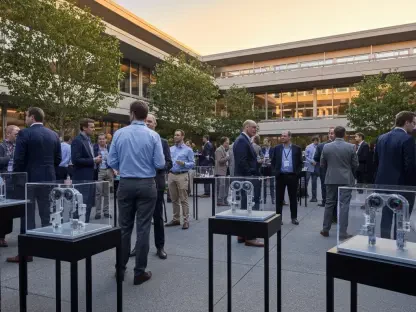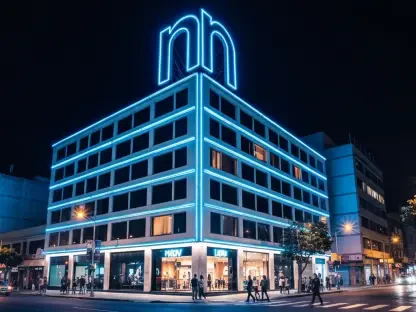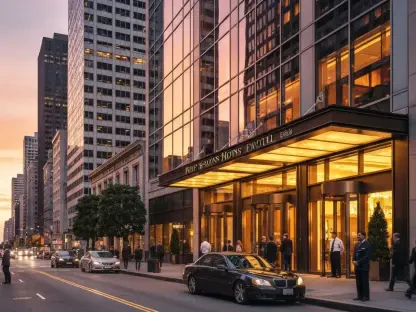Amidst the vibrant backdrop of the hospitality industry, Katarina Railko stands as a seasoned expert. With her extensive experience in travel and tourism, she offers invaluable insights into the current dynamics affecting hotels. From changing tariff policies to evolving consumer behaviors, Katarina delves into the complexities of the industry, shedding light on how these factors impact operations and forecasts. Readers are treated to an informative discussion on vital trends and economic indicators shaping the future of hospitality.
Can you explain the current sentiment in the hotel industry amidst economic uncertainties like tariffs and decreased international arrivals?
The sentiment in the hotel industry is a mix of caution and resilience. The changing tariff policies certainly create a sense of uncertainty, and international arrivals have dropped, posing challenges. However, the industry has shown robustness in the face of these hurdles. There’s a growing recognition that while conditions are tough, demand is still present, reflecting an underlying strength.
How are the tariff policies affecting the hotel industry, and what potential impacts do they pose?
Tariff policies are a major concern as they introduce unpredictability into the economic landscape. The constant changes make it difficult for hoteliers to plan strategically, potentially affecting investment and growth trajectories. While the full scope of impact remains uncertain, the industry is vigilant and adaptive, using resilience as a tool to navigate these shifting sands.
Adam Sacks mentioned that people are “genuinely freaked out.” What specific concerns are contributing to this fear?
The fears stem mainly from uncertain economic conditions exacerbated by tariff fluctuations and low consumer confidence. This environment breeds anxiety, as people fear the potential for downturns in travel demand and spending. It’s crucial for industry leaders to stay focused, ensuring they have strategies to weather these storms and reassure stakeholders.
Despite negative headlines, experts at the forum seemed optimistic. What factors are contributing to this optimism?
The optimism arises from several positive indicators. Even amidst negative headlines, the demand for travel remains steadfast. People are still eager to allocate their discretionary income towards travel experiences, indicating a robust underlying demand. Additionally, luxury segments continue to demonstrate resilience, offering stability at the upper end of the market.
How does the current consumer sentiment compare with the actual demand in the hotel industry?
There’s indeed a disconnect between consumer sentiment and actual demand. While sentiment might be subdued, actual demand has not plummeted as one might expect. This paradox highlights a mismatch; despite gloomy projections, travelers are still investing in experiences, suggesting a latent strength in the market.
Anthony Capuano mentioned the disconnect between consumer confidence and demand. Can you elaborate on this disconnect?
Consumer confidence metrics suggest a lack of optimism, yet this doesn’t correlate directly with spending behaviors. What we’re seeing is that travelers prioritize experiences and are willing to spend despite bleak economic outlooks. This disconnect underscores the need for nuanced strategies that focus on leveraging demand rather than succumbing to sentiment pessimism.
What are some of the economic indicators that industry experts are paying attention to in predicting future trends?
Experts are closely monitoring indicators such as RevPAR forecasts, international travel flow data, and employment trends in the leisure and hospitality sectors. These metrics offer insights into consumer behavior patterns and help gauge the potential for sustained growth despite economic uncertainties.
How does changing consumer behavior, such as last-minute bookings and price sensitivity, impact the hotel industry?
Changing consumer behaviors have significant implications. Last-minute bookings mean hoteliers must be agile, adapting to shorter lead times. Price sensitivity prompts a shift towards competitive pricing strategies, ensuring value offerings without sacrificing quality or bottom lines. Both factors demand operational flexibility and innovative marketing approaches.
What are the current trends in RevPAR (Revenue Per Available Room), and how are they expected to evolve?
Current trends indicate weakened RevPAR growth, influenced by economic softness and reduced international arrivals. However, experts anticipate that RevPAR will stabilize as demand dynamics firm up. While not as robust as previous years, there’s hope that the industry will recalibrate and find equilibrium.
STR’s Amanda Hite mentioned a “roller coaster” demand pattern. Can you describe what this means for the industry?
The “roller coaster” demand pattern refers to fluctuations in room demand, with some months showing unexpected softness and others rebounding. This erratic trend challenges hoteliers to remain adaptable, making forecasting more complex but also fostering a resilience that can be advantageous in navigating unpredictable demand cycles.
How are inflation and labor expenses affecting room rates and overall hotel operations?
Inflation presses on room rates, forcing growth that doesn’t match pace with rising costs. Meanwhile, labor expenses continue to climb, impacting operational budgets. Hotels must balance maintaining competitive pricing with managing increased expenses—a tightrope walk that demands innovation and efficiency in operations.
Are there specific factors contributing to the continued strength of the luxury segment in the hotel industry?
The luxury segment’s strength derives from its clientele—high-net-worth individuals whose financial resilience bolsters the market. Their spending habits and continued travel prioritize luxury experiences, providing stability and opportunities for growth even amidst broader economic challenges.
How does income disparity play a role in the performance of different segments within the hotel industry?
Income disparity shapes hotel performance, with the luxury segment thriving due to the spending capacity of wealthier guests. Conversely, lower-income travelers face financial stress, impacting budget and mid-tier segments more acutely. This bifurcation demands tailored strategies focusing on distinct demographic needs.
Group travel is mentioned as a bright spot. Can you provide more details on its current state and future projections?
Group travel remains robust, with bookings for future events showing healthy growth. Corporate and group travel sectors are vital for hoteliers, providing stability through contracted business. As the industry anticipates continued strength, it highlights the importance of nurturing relationships and exploring segment-specific innovations.
With changes in how and where people work, how might this influence the hotel industry’s growth?
Flexible work arrangements allow travelers to blend business with leisure, presenting new growth avenues. Hotels adapting to this trend offer remote work-friendly environments and tailored packages, leveraging the blurred lines between work and vacation to attract modern travelers seeking flexibility and experiences.
What challenges arise from the current supply backdrop, and how do they present opportunities for the industry?
Supply constraints challenge the industry by limiting available inventory, yet they also present opportunities. Focusing on operational efficiency and optimizing existing assets can enhance profitability. Additionally, supply pressures might spur innovation, leading to new concepts and partnerships.
How do experts at the forum anticipate the hotel industry will adapt to these changing conditions in the long term?
Experts foresee adaptation through increased focus on sustainability, leveraging technology to meet evolving consumer expectations, and embracing flexible operational models. The industry’s agility and willingness to innovate are crucial as it navigates complex market dynamics, ensuring future resilience and growth.









